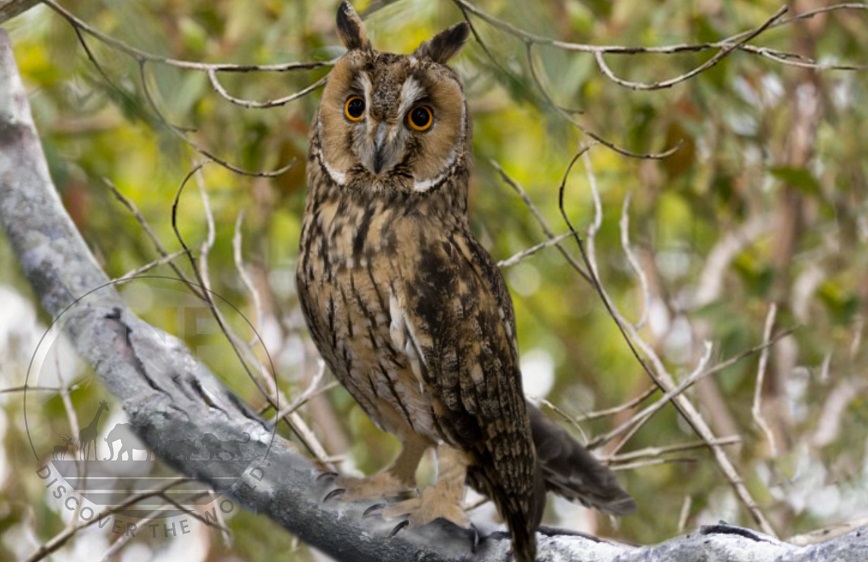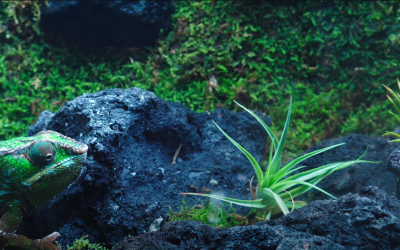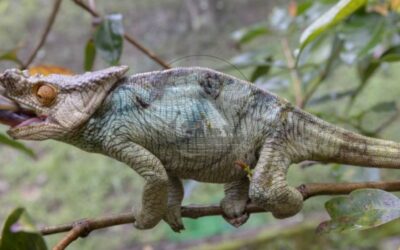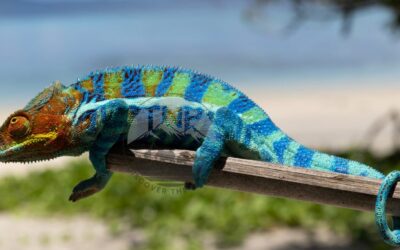A Look at Unique Birds Of Madagascar
Madagascar has been my happy place for years now—I’ve lost count of how many times I’ve been there, but each visit keeps me coming back for more. Whether it’s the greenery or the fascinating wildlife, this island has a way of tugging at the heartstrings of nature lovers like me.
Due to its different environments, the island has a remarkable variety of bird species, ranging from desolate plains to rainforests! From the colorful Pink-Backed Pelican dancing through the water to the majestic Madagascar fish eagle controlling the skies, Seeing these Madagascar birds is always like stumbling upon pure beauty.
Also, don’t miss out on the world’s unique Madagascar bugs I have discovered!
Madagascar Fish Eagle
The Madagascar Fish Eagle (Haliaeetus vociferoides), AKA Madagascan Fish Eagle, is a wonderfully gorgeous species, representing strength and perseverance in its natural habitat. It’s the national bird of Madagascar. The sapphire waters of Madagascar’s coastline are a haven for a Madagascar Fish Eagle. With its strong talons and sharp eyes, this bird rules the island’s rivers, lakes, and coastlines.
With a wingspan reaching up to 7 feet, the Madagascar Fish-Eagle is a truly impressive sight. Its body is a deep, rich brown, contrasting beautifully with its pale brown head and a flash of white on its tail. Soaring effortlessly on thermals, it patrols its territory with a watchful gaze, ever alert for movement below.
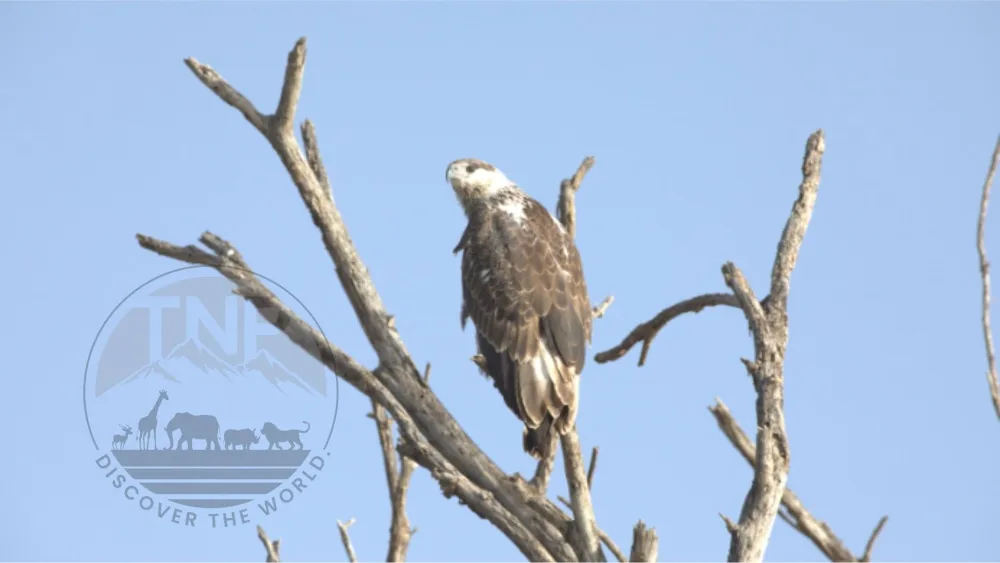
Nature has equipped the Madagascar Fish Eagle with the perfect hunting tools. Its sharp, hooked beak can easily tear through flesh, while its powerful legs and talons are designed to grasp slippery fish with a vice-like grip. Excellent eyesight allows it to spot prey from a distance, making it a formidable hunter.
The bird employs various strategies to catch its aquatic prey. One standard method is to soar gracefully above bodies of water, using its keen eyesight to spot fish swimming near the surface. Once a suitable target is identified, the eagle swoops down with impressive speed and precision, using its powerful talons to snatch the fish from the water’s surface or shallow depths.
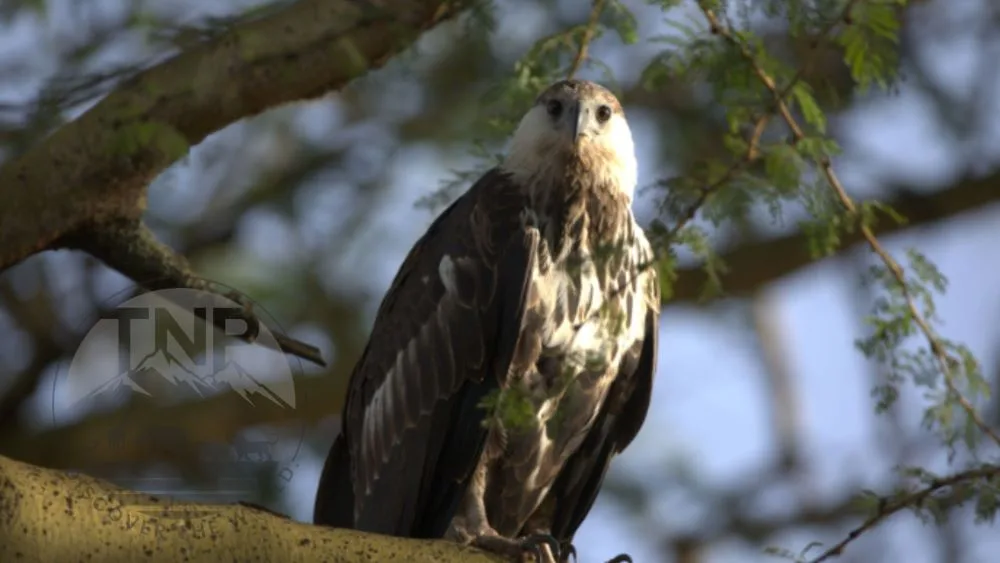
One notable park where the Madagascar Fish Eagle can be spotted is the Tsingy de Bemaraha National Park, located in the western part of the island. This UNESCO World Heritage Site boasts stunning limestone formations, dense forests, and pristine waterways, providing an ideal habitat for these iconic eagles.
The Madagascar Fish Eagle can also be found in other protected areas such as Ankarafantsika National Park, Marojejy National Park, and Ranomafana National Park, each offering unique opportunities to observe these majestic birds in their natural environment.
Madagascar Sparrow Hawk
The Madagascar Sparrow Hawk is one of the unique-looking birds I’ve had the opportunity to photograph in Madagascar. The Madagascar Sparrowhawk (Accipiter Madagascariensis) is a master of silent strikes that lives deep within the beautiful rainforests of Madagascar.
Like other Madagascar birds, the sparrow hawk contributes significantly to the island’s natural equilibrium. With lightning-fast strikes, this secretive raptor keeps prey numbers under check.
Unlike its vibrantly colored rainforest neighbors, the Sparrowhawk embodies an understated elegance. Adult males sport a sleek grey back adorned with fine barring on their undersides. Females, however, are considerably larger and boast a hint of reddish-brown in their barring. This size and plumage variation allows them to target a broader range of prey.
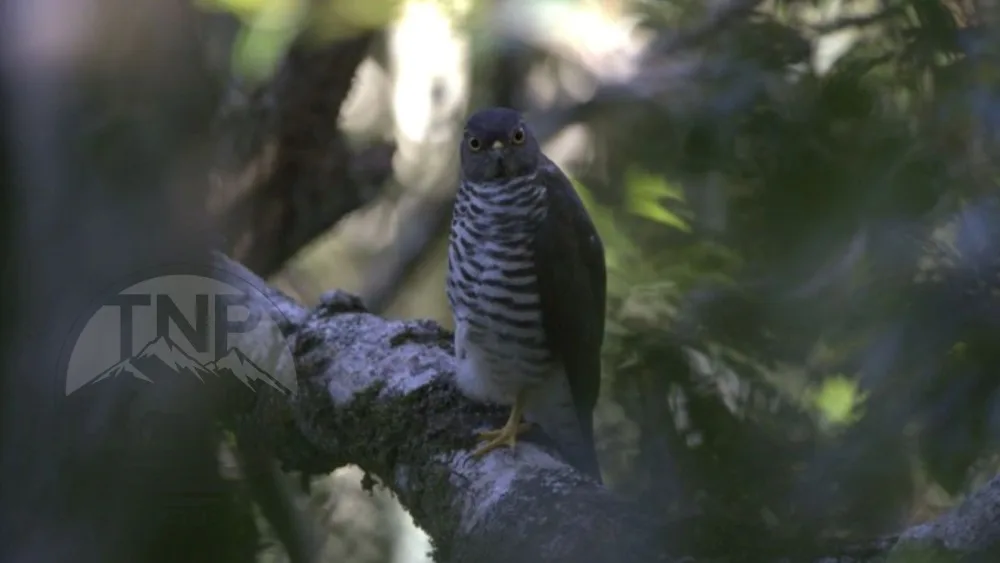
The Madagascar Sparrowhawk prefers the dense foliage of the rainforest. It is experts at navigating through the branches, and its short, rounded wings grant it exceptional maneuverability. This allows it to weave through the trees with surprising speed and agility.
The majority of Madagascar’s parks provide excellent bird-watching opportunities. Visiting all of the best birding parks in a single tour is practically hard. However, visiting both the rainforest and the dry, spiny forest zones is beneficial for seeing a diverse assortment of animals.
As an opportunistic attacker, the Madagascar Sparrowhawk feeds on a range of tiny birds, insects, and mammals. It relies on surprise strikes, frequently ambushing victims from hidden perches or darting through the vegetation with incredible agility.
While primarily solitary creatures, Madagascar Sparrowhawks come together during the breeding season. Courtship involves a captivating display of acrobatic flight and vocal exchanges between potential mates. Once paired, they collaborate to build a nest high up in a tree and raise their young.
Madagascar Blue Coua
The Madagascar Blue Coua (Coua caerulea) stands out in Madagascar’s beautiful rainforests. This intriguing bird, a member of the cuckoo family, shines out against the emerald foliage with its striking coloring.
The Blue Coua lives up to its name. Its feathers boast a profound, mesmerizing blue that covers its entire body. This stunning bird is distinguished by its vivid blue body, contrasting black patterns on its lower body, and a long, slender tail. They have a patch of bare, oval-shaped blue skin around each eye, a characteristic all Couas share.
This striking coloration isn’t just for show; it’s believed to serve as a warning to predators. The bright blue might signal the presence of toxins within the bird, deterring potential attackers. But many natural predators prey on Coua, including carnivores (native and introduced), raptors, and snakes.
Although the photo I took does not capture the beauty of this Madagascar bird, the fantastic colors are not evident from this viewpoint.

The Blue Coua is an arboreal bird that spends most of its time sitting on branches and flying through the rainforest sky. Its small, broad wings and long tails are ideal for moving through dense forests. While it can fly, it prefers to hop and glide between branches with remarkable speed.
During the breeding season, male Madagascar Blue Couas perform elaborate courtship displays to attract mates, including vocalizations and intricate dances among the branches. Once a pair bonds, they build a nest of twigs and leaves high in the forest canopy, where the female lays her eggs, and both parents take turns incubating them.
Like many other species endemic to Madagascar, the Madagascar Blue Coua faces threats from extinction, habitat loss, and fragmentation due to deforestation and human encroachment. Conservation efforts are essential to protect Madagascar’s remaining forests and ensure the survival of this stunning bird.
Exploring the Rich Diversity of Madagascar Animals
African Spoonbill-Madagascar
The African Spoonbill (Platalea alba) is a fascinating bird species in various wetland habitats across Africa, including Madagascar. Its distinctive spoon-shaped bill sets it apart from other wading birds and makes it instantly recognizable.
African spoonbills have stunning transitional colors. Their bodies are adorned with white feathers, while their legs and bare patches around their face are reddish.
The defining feature is the wide, flat bill resembling a spoon. This specialized tool allows them to sweep through shallow water, effectively scooping up small fish, crustaceans, and insects.
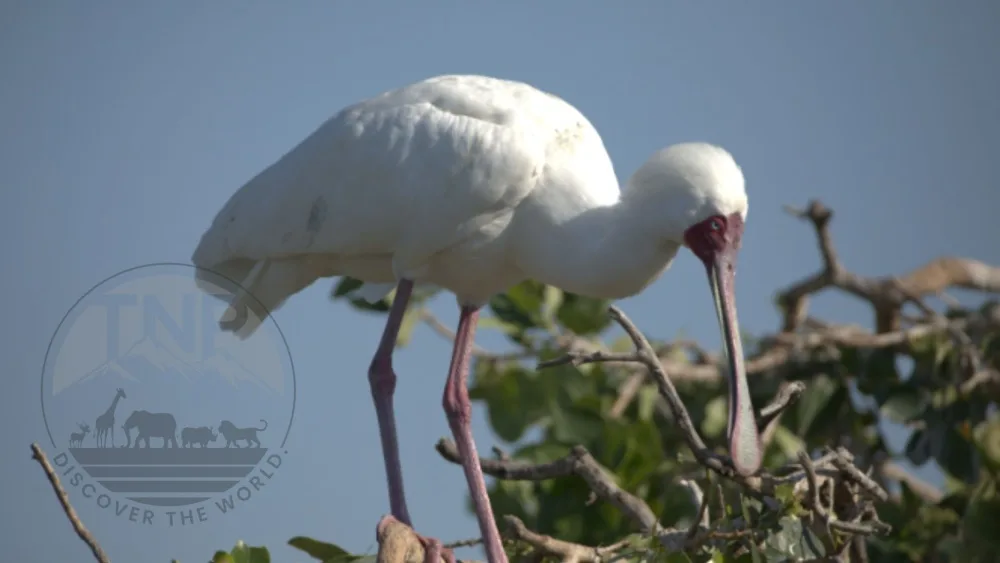
In Madagascar, the African Spoonbill inhabits various wetland environments, including rivers, lakes, marshes, and coastal lagoons. These areas provide the shallow water they need to utilize their specialized feeding technique.
It also provides abundant food sources for the spoonbill, primarily feeding on aquatic invertebrates such as crustaceans, mollusks, and insects. Its unique bill is perfectly adapted for sweeping through the water, capturing prey precisely.
Unlike some solitary birds, African Spoonbills are often seen in groups, wading and feeding together in shallow waters. They may even share colonies with other wading birds like herons and ibises.
Madagascar Buzzard
The Madagascar Buzzard (Buteo brachypterous) is a beautiful bird of prey unique to Madagascar. This raptor contributes significantly to the country’s ecosystem as a top predator due to its remarkable wingspan and acute vision.
Visually, the Madagascar Buzzard is a lovely bird with rich tones in its coloration, including brown, grey, and white. Its large wings and small tail are distinguishing features that contribute to its aerial hunting abilities.
As a skilled hunter, the Madagascar Buzzard primarily preys on small mammals, birds, reptiles, and insects. It utilizes a combination of soaring flight and keen eyesight to spot potential prey from high vantage points, then swoops down with precision to capture its target using its sharp talons.
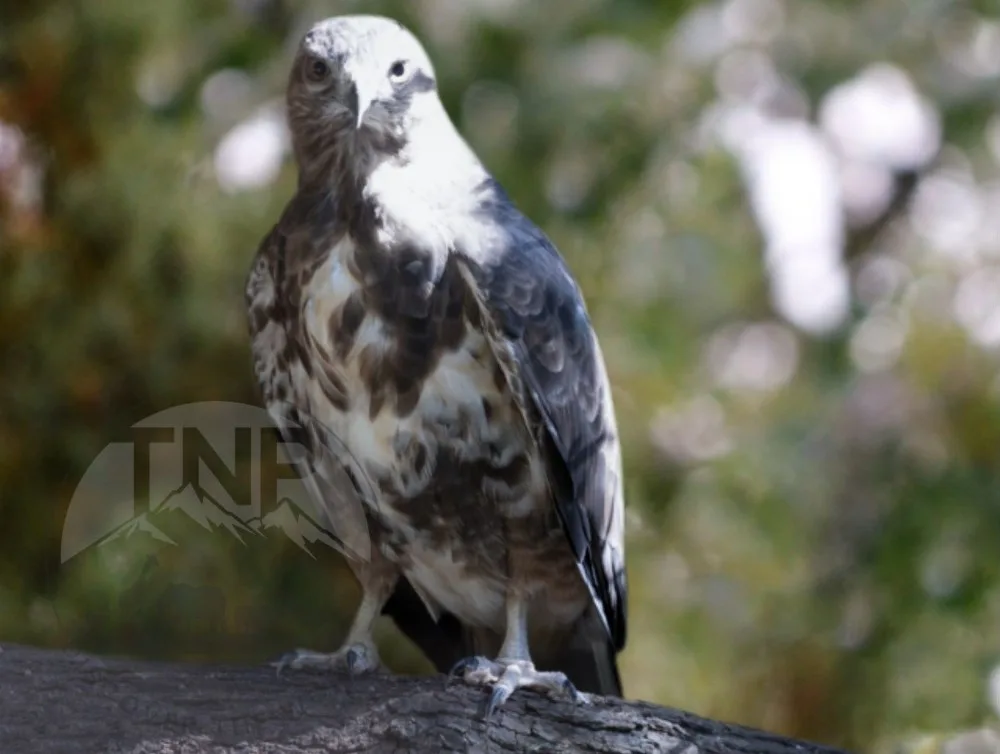
The Madagascar Buzzard is often found in various habitats across the island, including forests, savannas, and grasslands. It adapts to different environments and can thrive in natural and human-altered landscapes.
These buzzards are primarily solitary creatures, except during breeding season. They establish territories and fiercely defend them from potential rivals. Courtship involves impressive aerial displays, with males performing dives and acrobatic maneuvers to impress females.
While the Madagascar Buzzard isn’t listed as critically endangered, it faces several threats. Pesticides can disrupt the food chain by harming the prey populations it relies on.
Pink-Backed Pelican-Madagascar
The Pink-backed Pelican (Pelecanus Rufescens) holds a special status in Madagascar. While it is a resident breeder in parts of Africa and southern Arabia, its presence in Madagascar differs. In recent decades, molecular genetics has provided new insights into the origins of evolution and speciation.
The Pink-backed Pelican’s existence in Madagascar is probably the result of natural dispersal processes that are occasionally helped by high winds or storms. Individual birds may have accidentally or during migration crossed the Mozambique Channel from mainland Africa to Madagascar.
These intrepid pelicans would have been well-suited to life in Madagascar’s diverse wetland environments, which include lakes, estuaries, and coastal regions. The pink-backed pelican would have been able to establish breeding populations and flourish in its new habitat if it had had an abundance of food supplies and very few competitors or predators.
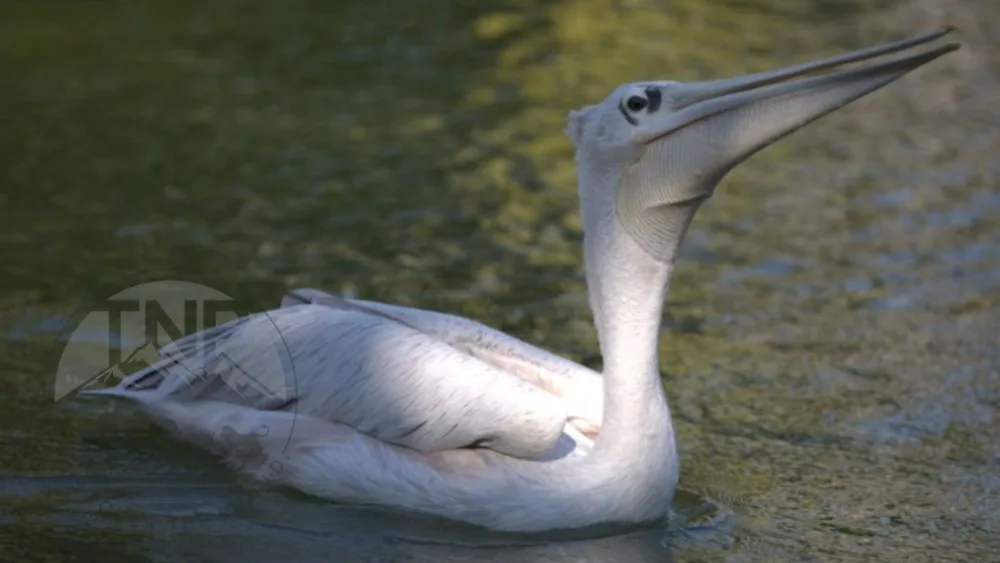
These Madagascar birds are typically found in various wetland habitats throughout Madagascar, including coastal areas, estuaries, lakes, and rivers. They are highly adaptable and can thrive in fresh and saltwater environments, depending on food availability.
The Pink-backed Pelican is a skilled hunter, primarily feeding on a diet of fish, crustaceans, and other aquatic organisms. They are often seen foraging in shallow waters, using their large bills and expandable throat pouches to scoop up prey efficiently.
Breeding colonies of Pink-backed Pelicans can be found in select regions of Madagascar. They build their nests in trees or on the ground, depending on the local habitat conditions. During the breeding season, these colonies become bustling hubs of activity, with pairs of pelicans engaging in courtship displays and caring for their young.
Madagascar Grey-Headed Lovebird
The Madagascar Grey-headed Lovebird (Agapornis Canus) is one of the most charming and charismatic Madagascar birds I have captured!
The Madagascar Grey-headed Lovebird has a striking appearance, primarily green feathers complemented by a grey head and face. It stands out among the bird species of Madagascar thanks to its vivid orange beak and colorful patterns that enhance its overall appeal.
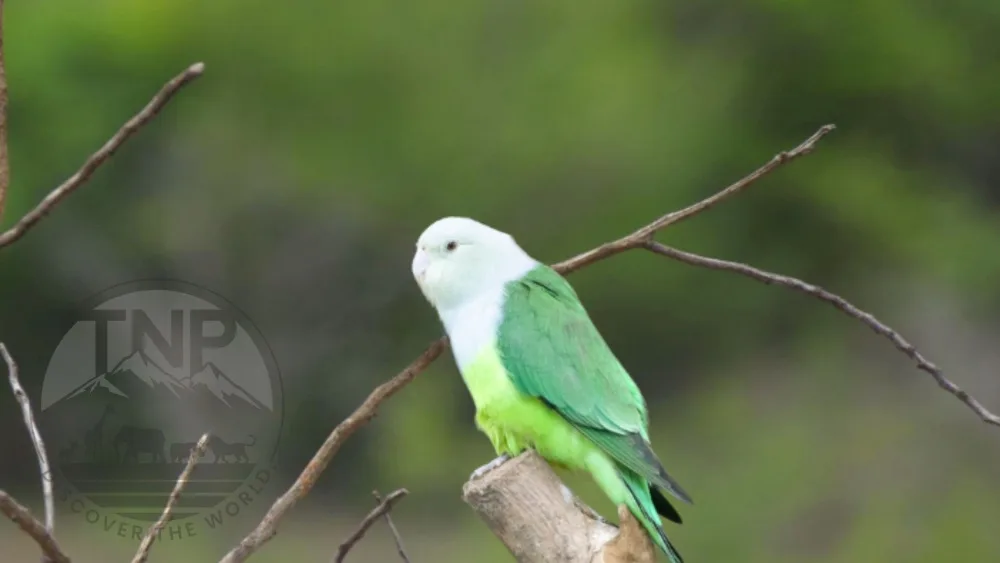
These lovebirds are typically found in various habitats across Madagascar, including forests, woodlands, and savannas. They are highly social birds, often seen in small flocks or pairs, engaging in playful behaviors and vocalizations that strengthen bonds within their group.
Like other lovebird species, the Madagascar Grey-headed Lovebird forms strong pair bonds with a mate, engaging in mutual preening and displaying affectionate behaviors. They are cavity nesters, often nesting in tree hollows or abandoned nests of other bird species.
The diet of the Madagascar Grey-headed Lovebird consists primarily of seeds, fruits, and vegetation, which they forage for both on the ground and in trees. They are also known to visit agricultural areas searching for cultivated crops, which can sometimes conflict with human interests.
Madagascar Guide By A World Travelling Photographer
Madagascar Long-Eared Owl
The Madagascar Long-eared Owl (Asio Madagascariensis) is a remarkable and mysterious bird species only found in Madagascar. With its uniquely long ear spikes and cryptic coloration, this owl is a charming icon of Madagascar’s unique and diversified bird biodiversity.
The Madagascar Long-eared Owl is a master of camouflage, with mottled brown and grey feathers that allow it to blend in with its woodland surroundings.
Its lengthy ear tufts set this owl apart from other Madagascar birds. These aren’t actual ears but rather an extension of their head feathers. This unique characteristic gives them a distinctive look and helps conceal themselves within the leaves and branches.
Though the name “long-eared” might lead you to compare them to owls found elsewhere, they are most closely related to the African Long-eared Owl.

The Madagascar Long-eared Owl is a nocturnal predator well-suited to hunting at night. It uses its great hearing to detect even the tiniest sounds of possible prey, which consists mostly of tiny animals, birds, insects, and reptiles. The owl captures its victim with extraordinary efficiency, flying silently and striking precisely.
The Madagascar Long-eared Owl lives in various wooded habitats throughout the island, including rainforests, dry deciduous woods, and spiny forests. It favors densely vegetated locations with numerous prey populations, where it may roost and nest safely within the canopy.
The breeding behavior of the Madagascar Long-eared Owl follows a pattern typical of many owl species. Breed on the island usually occurs during the dry season, which in Madagascar typically falls between April and October.
Madagascar blue vanga
Have you ever been lucky enough to glimpse the dazzling Madagascar Blue Vanga fluttering gracefully through the forests of Madagascar? It’s a breathtaking experience that underscores the natural beauty of these Madagascar birds.
Endemic to Madagascar, the captivating Madagascar Blue Vanga (Cyanolanius Madagascarinus) stands out with its brilliant blue plumage and distinctive foraging style. Belonging to the Vanga family, which is exclusive to Madagascar and nearby islands
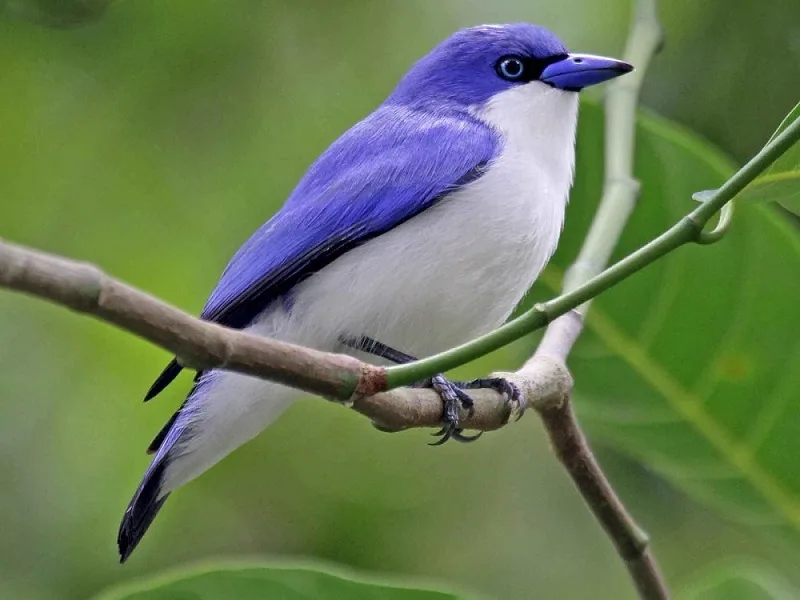
This avifauna is a small to medium-sized bird, reaching about 16-19 cm (6.3-7.5 inches) in length. Like most Vangas, the Blue Vanga has short, rounded wings and is not built for long-distance travel. Its call is described as a rasping scold, which it repeats frequently.
Males are unmistakable with their bright blue plumage covering their head, upperparts, and even their bill. A black line extends through the eye, and the underparts and throat contrast white.
Females are generally duller in color compared to males. They are primarily greyish-blue with a pale orange or buff wash on their underparts and lack the stark black-and-white contrast of the males.
Thankfully, the Madagascar Blue Vanga are not threatened on the island. Currently, they are listed as “Least Concern” by the IUCN. However, habitat loss due to deforestation and other environmental pressures are potential threats.
10 Breathtaking Places To Visit Madagascar
Madagascar Cuckoo Roller
The Madagascar Cuckoo Roller (Leptosomus discolor) is a fascinating and enigmatic bird species native to Madagascar. Despite its name, it is not a cuckoo or roller but a member of its unique family, Leptosomidae.
One of the most distinctive features of the Madagascar Cuckoo Roller is its large, broad bill, which it uses to catch and consume a variety of prey, including insects, small reptiles, and even small mammals. Despite its name, the Madagascar Cuckoo Roller does not parasitize the nests of other birds like true cuckoos but hunts for its food.
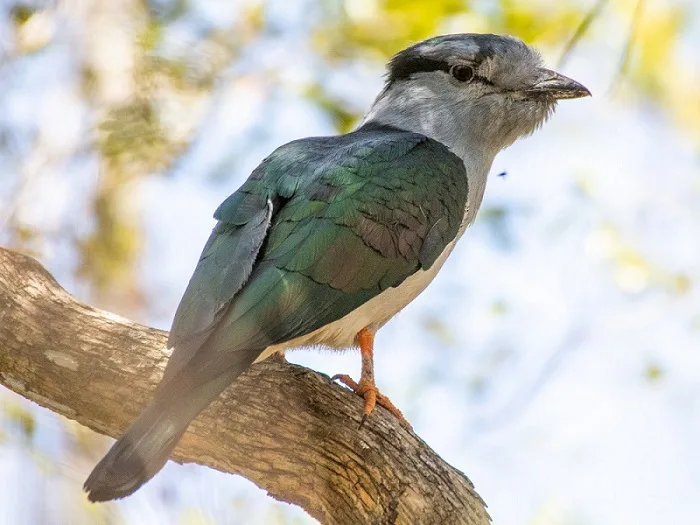
The Madagascar Cuckoo Roller is typically found in various forest habitats across Madagascar, including rainforests, dry deciduous forests, and montane forests. It is often observed perched high in the canopy, scanning its surroundings for potential prey.
Despite being relatively widespread throughout Madagascar, the Madagascar Cuckoo Roller faces threats to its survival due to habitat loss and degradation caused by deforestation and human development. Conservation efforts aimed at protecting and restoring Madagascar’s forests are essential for ensuring the continued survival of this unique and charismatic species of birds.
Conclusion
Madagascar is an excellent birding destination. It is one of the world’s largest biodiversity centers, boasting an impressive array of over 300 species, many of which are found nowhere else in the world. From the lush rainforests of the east to the arid deciduous forests of the west, Madagascar offers a paradise for birdwatchers and nature lovers.
Having visited Madagascar multiple times, I’ve been fortunate enough to capture the beauty of its unique birds through my camera lens. Each trip has been a delightful surprise, showcasing the island’s incredible biodiversity and providing endless opportunities for photography enthusiasts.
Madagascar birds serve as a testament to the island’s exceptional ecological richness. We must prioritize protecting their habitats and promoting sustainable practices to ensure their continued existence and the preservation of the Malagasy ecosystem for generations to come.
The Best Guide To Know Madagascar People
FAQS of Madagascar Birds
What is the rare bird in Madagascar?
One rare bird in Madagascar is the Madagascar Pochard (Aythya Innotata). This diving duck species is critically endangered, with only a few individuals remaining in the wild. Loss of habitat due to wetland degradation and hunting pressure are among the factors contributing to its rarity.
What kind of birds live in Madagascar?
Madagascar is home to many bird species, many of which are found nowhere else on Earth. Some notable bird families in Madagascar include the lemurs, vangas, couas, and ground rollers. Endemic species such as the Madagascar Fish Eagle, Madagascar Cuckoo Roller, and Madagascar Long-eared Owl are among the highlights of the island’s avian fauna.
Why is the Madagascar fish eagle endangered?
The Madagascar Fish Eagle faces several threats that contribute to its critical endangerment:
Habitat loss: Deforestation and converting natural areas to other uses significantly reduce the eagle’s nesting and hunting grounds.
Hunting: These birds are sometimes targeted by local fishermen who view them as competitors.
Traditional medicine: Certain body parts are used in traditional medicine practices, putting further pressure on the population.

